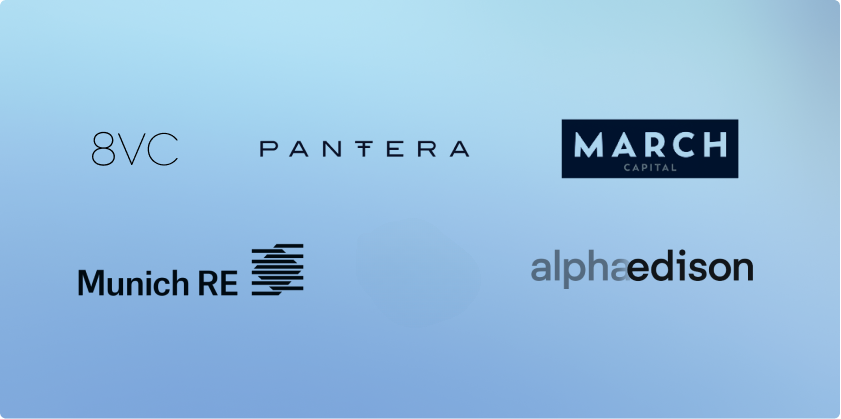Portfolio monitoring, then and now
Spreadsheets used to be the default for tracking portfolio performance. They were familiar, flexible, and (at a small scale) good enough. But as firms grew and LP expectations increased, the cracks showed: manual inputs, version conflicts, and siloed data slowed decision-making and increased reporting risk.
Today’s investment operations demand something better. Portfolio monitoring tools have emerged as purpose-built platforms for collecting, analyzing, and sharing performance data across VC and PE firms. They’ve become essential infrastructure.
Why traditional tracking doesn’t scale
Manual workflows might work early on, but they introduce compounding risk as fund size and portfolio complexity increase. Common pitfalls include:
- Fragmented, outdated, or inconsistent data
- High time cost for quarterly reporting
- Difficulty in surfacing early indicators or red flags
- Limited audit trail or compliance readiness
None of this scales. And for firms trying to build operational leverage, it creates drag instead of lift.
What modern portfolio monitoring tools with AI and automation actually do
Portfolio monitoring tools today are more than static dashboards. They function as centralized intelligence layers across the firm’s data stack. Key features typically include:
- Automated data ingestion from portfolio companies
- Real-time standardization of metrics, allowing consistent tracking across companies regardless of format or source
- A centralized source of truth for firm-wide KPIs
- Audit-ready, version-controlled infrastructure
- Granular access controls, so finance, investment, and operations teams can share tailored views with internal stakeholders and LPs, while portfolio companies retain control over their own data
These systems replace scattered spreadsheets and ad-hoc communications with structured workflows that support everything from day-to-day monitoring to investor benchmarking and fund valuations.
What to look for when buying
Choosing the right portfolio monitoring platform depends on more than feature checklists. It’s about fit—for your firm structure, your workflows, and the way you engage with portfolio companies. Key considerations include:
- Reporting demands: If LP reporting is a recurring pain point, prioritize platforms with templated exports, audit-ready data trails, and support for quarterly, ad hoc, and ESG reports.
- Workflow compatibility: Internal teams benefit from platforms with robust APIs, flexible dashboards, and support for scheduled data pulls and alerts. Bonus if it integrates with your fund admin or data warehouse.
- Ease of use for founders: If your portfolio companies struggle to submit data, the platform won’t work. Look for a streamlined interface, minimal manual input, and company-facing tools designed to reduce friction.
- Data accuracy and validation: Ask how the platform ensures clean data: whether it uses AI, human QA, or both. Inaccurate inputs make everything downstream unreliable.
- Security and access control: Make sure there are fine-grained permissions by role, company, and fund, along with SOC 2 compliance, audit logs, and encryption standards.
Questions worth asking in a platform demo:
- How do you support historical data migration?
- What does onboarding look like, for both the firm and our portfolio companies?
- Can access permissions be tailored by team, fund, or LP?
- Is there a native benchmarking feature or integration?
- How often is data validated or refreshed?
- What level of customer support is available post-launch?
This stage is where a platform proves whether it’s built for scale, or just built for show. The right one won’t just “monitor” your portfolio. It will become the backbone of how you run it.
Where portfolio monitoring is headed next: AI + automation
Portfolio monitoring tools are shifting from static data collectors to dynamic operating layers across the firm. What used to be a backend reporting function is becoming a strategic advantage. Key trends shaping the next generation of monitoring tools include:
- Natural language interfaces: Users can ask plain-English questions like “What’s the quarterly burn rate trend for our Series B companies?” and get instant answers, eliminating the need for SQL or manual filtering.
- Predictive forecasting: Platforms are starting to surface expected runway, revenue projections, or hiring risks automatically, using past data trends and embedded analytics to model what’s next.
- Benchmarking as context, not just comparison: The most useful benchmarking isn’t static: it’s dynamic and specific to sector, revenue band, and stage. Tools like Standard Metrics embed these benchmarks directly into dashboards and portfolio reviews.
- Tighter system connectivity: Portfolio data doesn’t live in a vacuum. Leading tools now integrate directly with fund admin platforms, cap table systems, and data warehouses to enable continuous sync across internal systems.
- Collaborative workflows: As more firms institutionalize portfolio ops, tools are adapting to support shared workflows across finance, investment, and platform teams, along with structured communication back to founders.
- Faster LP response times: With centralized, auditable metrics, firms can answer LP requests in minutes, not days. Some tools now support self-serve LP access to curated, read-only dashboards.
- AI-assisted workflows: From flagging anomalies in financials to summarizing trends across notes and updates, AI is starting to act as a second set of eyes across the entire monitoring process.
Why Standard Metrics is the right AI-driven portfolio monitoring tool for you
Standard Metrics was built for firms that need reliable, real-time visibility into portfolio performance. Whether you’re tracking 10 companies or 200, it provides the infrastructure to move from reactive reporting to proactive portfolio management.
What sets Standard Metrics apart:
- Structured, founder-friendly data collection: Companies submit updates through a simple, standardized workflow (so no more chasing spreadsheets).
- Audit-grade accuracy: Financials are parsed with a mix of AI and human review to support valuations, LP audits, and quarterly reviews.
- Built-in benchmarking: Compare portfolio metrics to thousands of anonymized startups across sectors and revenue bands for context that actually informs decisions.
- Out-of-the-box integrations: Pull data from accounting platforms and data warehouses, or push it out through our robust API and MCPs.
- Trusted by top firms: Investors like Bessemer Venture Partners, General Catalyst, and Lux Capital use Standard Metrics to manage thousands of portfolio companies.
Frequently asked questions about portfolio monitoring tools
Who needs these tools?
Any investor with multiple portfolio companies and LP relationships. These tools are especially valuable once reporting demands outgrow manual tracking.
Do they clean the data?
Yes, most platforms use a mix of system integrations, structured workflows, and human QA to normalize and verify data before it’s reported or analyzed.
How long does implementation take?
Usually a few weeks to a couple of months, depending on fund size, existing systems, and data complexity.
Do they support ESG tracking?
Many platforms support ESG by allowing firms to define and collect custom metrics on a regular cadence.
Can they handle historical data?
Yes. Many platforms like Standard Metrics offer historical data migration as part of onboarding to support trend analysis and year-over-year views.
What if some portfolio companies are unresponsive?
Tools like Standard Metrics offer flexible workflows, automated nudges, and shared templates to make it easier for companies to participate. Many also allow firms to backfill or upload data directly if needed.
Can I build custom reports?
Most platforms support custom dashboards or exports. Some, like Standard Metrics, also offer natural language querying and in-platform visualizations.
Is it secure?
Enterprise-grade security is table stakes. Look for platforms that support SOC 2 compliance, permission controls, and data encryption.
What if our firm already has a data warehouse?
Many monitoring tools integrate with warehouses like Snowflake or Databricks. Some also offer native warehousing and embedded analytics to streamline setup.
Final thoughts
Spreadsheets aren’t built for what venture and private equity firms are trying to do today. Portfolio monitoring tools are. They reduce friction, increase visibility, and give teams more time to act on their data instead of hunt for it.
Ready to modernize how your team works with portfolio data? Start with Standard Metrics.
Automate your portfolio reporting
Find out how you can:
- Collect a higher volume of accurate data
- Analyze a robust, auditable data set
- Deliver insights that drive fund performance

